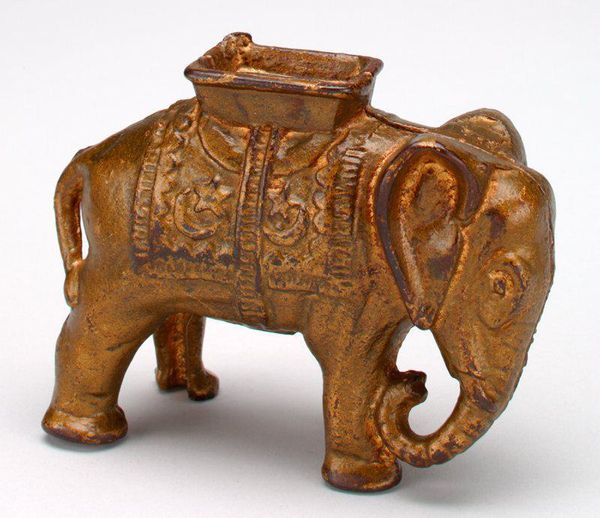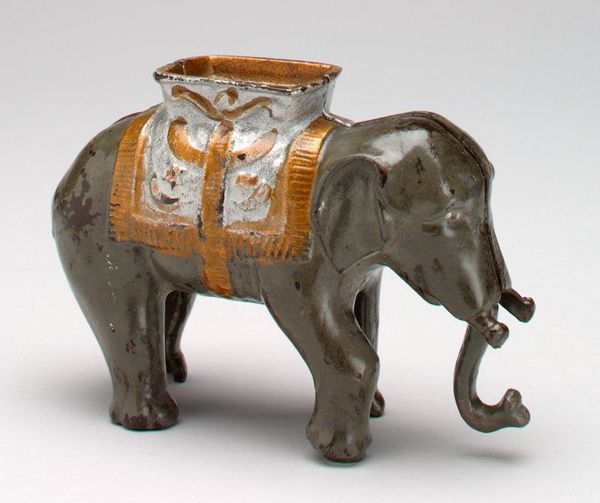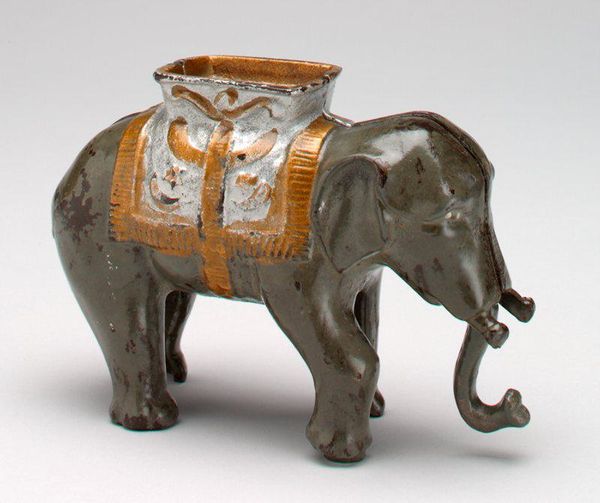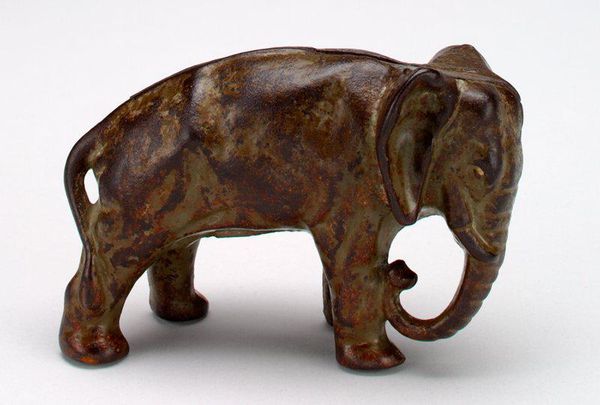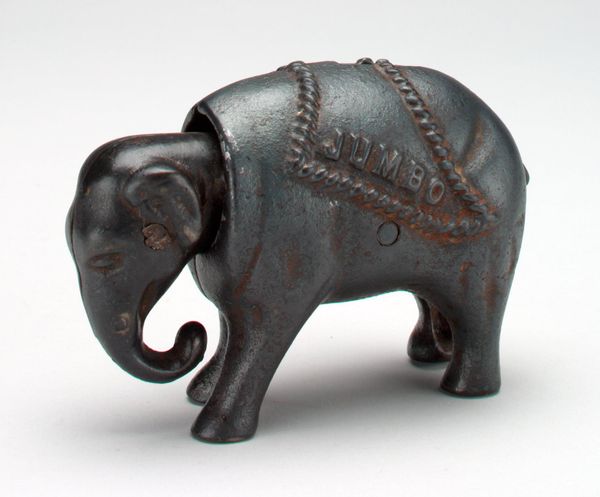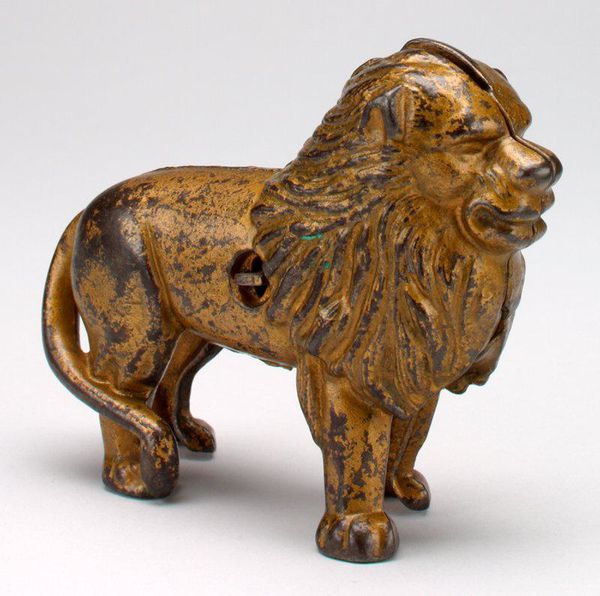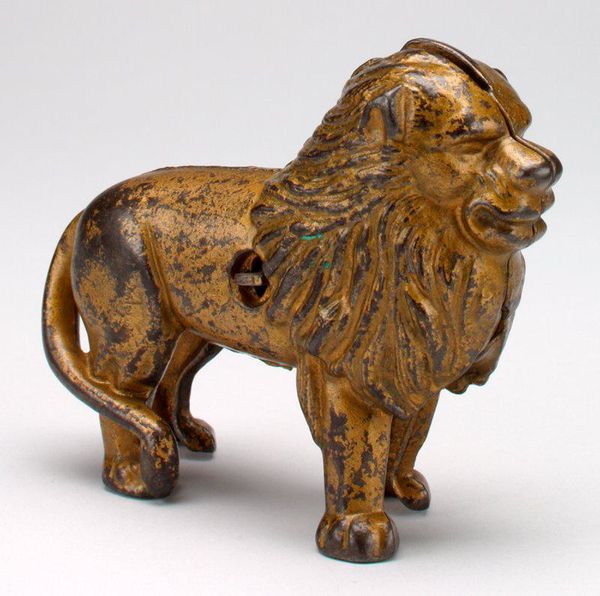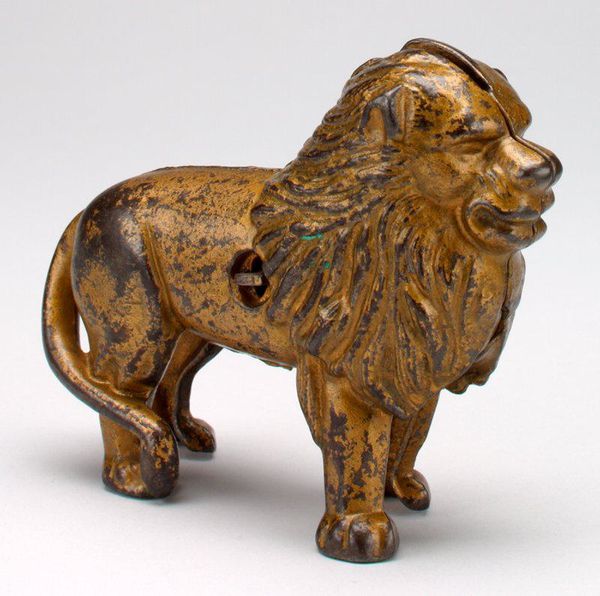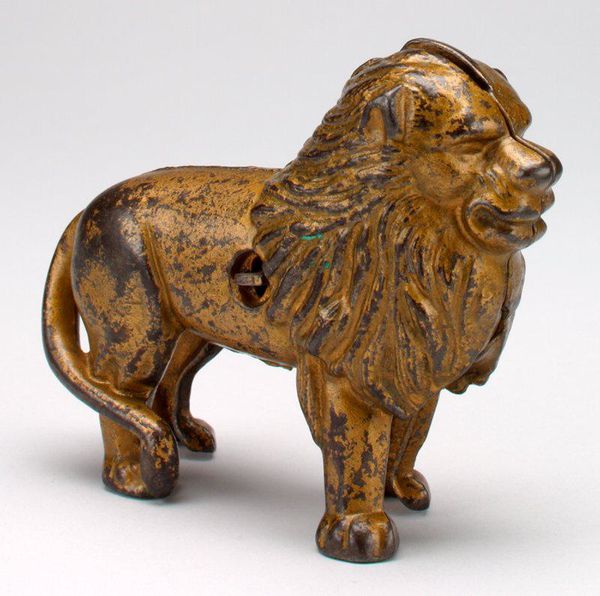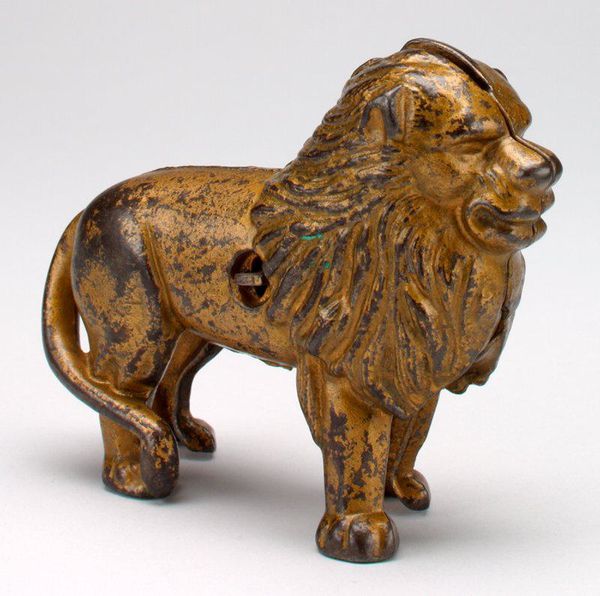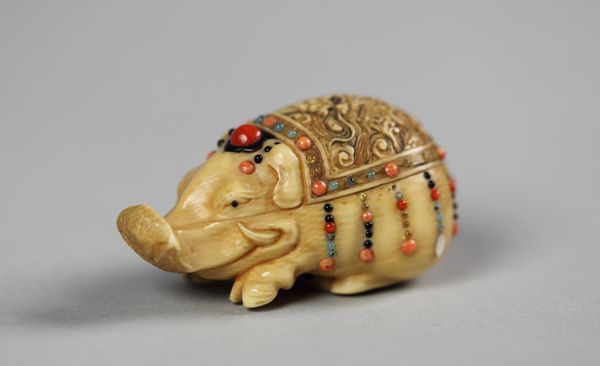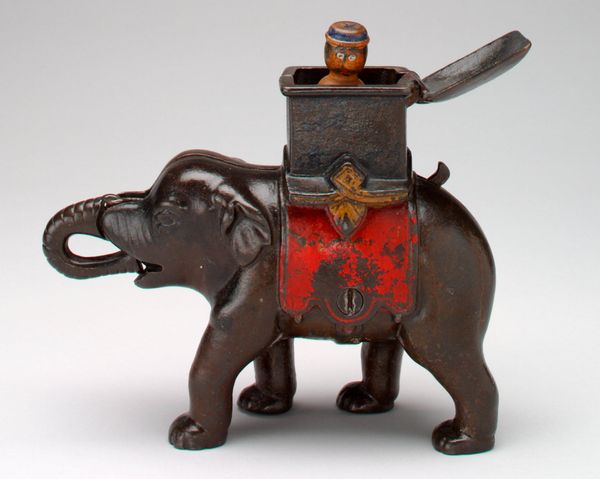
bronze, sculpture
#
sculpture
#
bronze
#
figuration
#
sculpture
Dimensions: 2 7/16 x 3 1/8 x 1 5/16 in. (6.19 x 7.94 x 3.33 cm)
Copyright: No Known Copyright
Curator: The patina on this little bronze elephant is just gorgeous; it speaks to years, perhaps decades, of handling. This is the "Elephant with Howdah," made in 1934 by the A.C. Williams Company, and it's currently residing here at the Minneapolis Institute of Art. Editor: It definitely looks… aged. I'm struck by the detail, though. It’s such a diminutive thing, yet they've managed to include so much texture and decoration in the saddle area and the elephant's blanket. What was the A.C. Williams Company known for? Curator: Exactly. They were a prolific American manufacturer of cast iron toys, particularly during the late 19th and early 20th centuries. This elephant is an interesting reflection on colonialism and power, you know? Elephants themselves have always represented those concepts, not just in Western eyes, but as a carrier of those in charge, particularly the imperial figures. It really invokes those narratives of control. Editor: It’s interesting how this humble object ends up embodying something so vast. Being mass produced, the use of bronze seems an elevated, surprising material decision. How does that material factor into the larger context, would you say? Curator: Bronze signifies wealth and permanence. But even within this bronze form, you have a kind of democratization, in the form of reproduction of status signifiers as affordable trinkets, as well as through casting methods. I think of how it circulates not only the symbolic, but actual goods throughout an expanding trade. It blurs the line between cultural symbol and commodity, reflecting the complexities of cultural exchange, especially in an era rife with socio-political exploitation. Editor: That makes me see this piece with completely different eyes. At first, I found its charm rooted solely in the smallness and the worn quality, that evidence of passing time, and of material, and yet there are such profound things packed within its making. Curator: Absolutely! I believe in looking at how art engages with larger global movements, shedding light on its historical, social, and even emotional effects across varied populations, through history and today. It enables understanding how symbols and power interact. Editor: This really demonstrates how the examination of an object, the materiality that constitutes its production, inevitably directs our eyes toward global conditions and structures. Thank you, this expanded my thinking of such a tiny, and very cute, historical artifact.
Comments
No comments
Be the first to comment and join the conversation on the ultimate creative platform.
